The Age and Sedimentary Environment of the Kunyang Phosphate Deposit, Central Yunnan: Constraints from Re-Os Isotopes
-
摘要: 川滇黔地区下寒武地层中广泛分布一系列磷矿床,其中滇中昆阳磷矿是我国下寒武统梅树村期黑色页岩中规模最大的海相沉积型磷矿床,其成矿时代以及沉积环境对于矿床成因研究以及区域找矿具有重要意义。Re-Os同位素不仅能够对富有机质沉积岩地层进行直接定年,而且还能为物质来源及沉积环境示踪提供一种有效的技术手段。本文对昆阳磷矿中谊村段磷块岩和石岩头段黑色页岩开展热表面电离质谱法Re-Os同位素示踪及定年探索性研究,获得了石岩头段黑色页岩Re-Os等时线年龄为521.9±5.4Ma,直接限定了昆阳磷矿黑色页岩沉积时代。磷块岩187Os/188Os初始比值为0.6576~0.7671,黑色页岩187Os/188Os初始比值为0.887,另外磷块岩187Re/188Os值为2.582~240.5,而上覆黑色页岩187Re/188Os值为96.24~341.8,而且磷块岩、黑色页岩微量元素δEu和δCe值在垂向剖面上显示由低变高的变化特征,这些证据表明昆阳磷矿形成正处于大陆快速剥蚀时期,指示大量陆源碎屑汇入海洋参与成岩-成矿过程。综合前人研究,本文认为,在寒武纪,大气氧含量快速升高,加剧陆壳风化,大量高放射性陆源Os的输入造成该时期内187Os/188Os初始比值逐渐升高。另外由于全球海平面上升,导致滇中早寒武世梅树村组沉积期古海洋环境由浅水氧化向深水还原逐渐过渡,而昆阳磷矿形成于该阶段海进旋回沉积早期。要点
(1) 获得下寒武统梅树村组石岩头段黑色页岩Re-Os等时线年龄为521.9±5.4 Ma,直接限定了昆阳磷矿黑色页岩沉积时代。
(2) 磷块岩形成于浅水氧化环境,黑色页岩形成于深水还原环境,大量陆源碎屑汇入海洋参与成岩-成矿过程。
(3) Re-Os同位素不仅能够对富有机质沉积岩地层进行直接定年,而且还能为物质来源及沉积环境示踪提供一种有效的技术手段。
HIGHLIGHTS(1) The Re-Os isochron age of black shale in the Early Cambrian Meishucun Formation is 521.9±5.4 Ma, which represents the black shale deposition age of the Kunyang phosphate deposit.
(2) Phosphorite was formed in a shallow and oxidizing water environment, and the overlying black shale was deposited in a deep and reducing water environment. During the Cambrian period, a large amount of terrestrial materials flowed into the ocean, some of which deposited and formed black shale and phophorite in the Kunyang phosphate deposit.
(3) The Re-Os isotope can not only directly date the organic-rich sedimentary rock but also provide an effective technique for sedimentary environment tracing.
Abstract:BACKGROUNDThe Kunyang phosphate deposit in central Yunnan is the largest marine sedimentary phosphorite deposit in China. The deposit is hosted in black shale of the Lower Cambrian Meishucun Formation. However, there is still some controversy on the material source of the phosphorite and the deposition age of the black shale.OBJECTIVESTo precisely date the black shale and provide direct constraint for the depositional age of the phosphorite and to better understand the successive depositional environment evolution from the phosphorite to black shale in vertical profiles.METHODSNegative Thermal Ionization Mass Spectrometry (NTIMS) Re-Os isotope tracer and dating studies were performed on phosphorite of Zhongyicun Member and black shale of Shiyantou Member in the Kunyang phosphate deposit.RESULTSThe Re-Os isochron age of black shale in the Shiyantou Member is 521.9±5.4 Ma, which directly constrains the deposition age of black shale in the Kunyang Phosphate deposit. The phosphorite and black shale samples have initial 187Os/188Os values from 0.6576 to 0.7671 and of 0.887, respectively. The phosphorite and black shale samples have 187Re/188Os values of 2.582-240.5 and 96.24-341.8, respectively. The δEu and δCe values of trace elements in the phosphorite and black shale show changes from low to high in the vertical profile. This evidence indicates that the formation of the Kunyang phosphorus deposit occurred in the period of rapid erosion in the mainland and a large amount of terrigenous debris involvement in diagenesis-mineralization also occurred.CONCLUSIONSBased on previous studies, the atmospheric oxygen content increased rapidly, aggravating the weathering of the continental crust and the input of a large number of highly radioactive terrestrial Os caused the initial 187Os/188Os initial ratio to increase gradually during the Cambrian Period. In addition, due to the rise of the global sea level, the paleo-marine environment of the Lower Cambrian Meishucun gradually changed from shallow water oxidization to deep water reduction. The Kunyang phosphorus deposit formed during the early stages of the sea-inward-cycle sedimentation.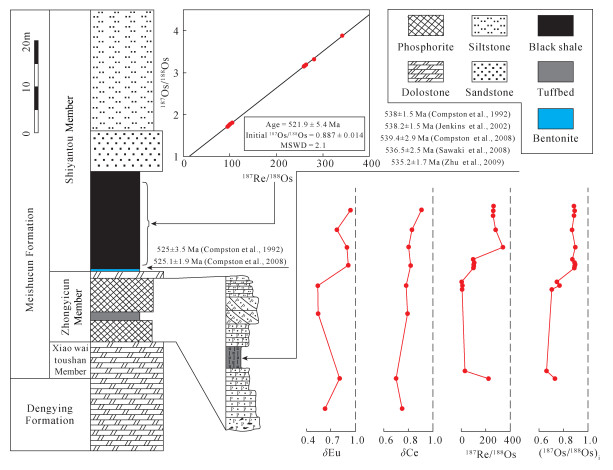
-
Keywords:
- Re-Os isotope /
- black shale /
- phosphorite /
- transgression /
- Meishucun Formation
-
铅锌矿石多以硫化矿共生,或与其他金属共生,组成复合多金属硫化矿床。矿物中伴生的钨、钼、锡、锗、硒、碲等有益组分的含量对矿床的综合评价和矿产工业开发及利用具有重要意义[1]。
对于铅锌矿石的分析,在国家标准方法GB/T 14353—2014中,钨和钼采用氢氟酸-硝酸-高氯酸体系进行样品分解,以电感耦合等离子体质谱仪(ICP-MS)测定,当溶液中共存的铜含量>5%或铅含量>10%时,对钨、钼的测定分别产生不同程度的正、负干扰,该方法通过在标准溶液中等量补偿干扰元素的方式扣除测定干扰。各类地质样品中锡的含量常低于10 μg/g,可采用固体粉末发射光谱法测定[2],但铅锌矿的含硫量高,采用电火花激发时易引起样品飞溅跳样;王铁等[3]采用5种混合酸消解锰铁中的痕量锡,但针对铅锌矿中难熔锡石矿物的分解效果难以保证。国家标准方法中,锗和硒分别以氢氟酸-硝酸-硫酸和碳酸钠-氧化锌进行样品分解,均采用原子荧光光谱法测定,此溶液体系中共存的高含量铅(320 mg/L以上)干扰锗的测定,而硒采用半熔法-沸水提取的前处理方法使进入测定体系的主量金属元素大幅度减少,基本消除了干扰。碲元素的丰度低,熔矿后通常需要分离富集,刘正等[4]采用萃取法进行样品预处理,以石墨炉原子吸收光谱法测定碲的含量。国家标准中采用共沉淀分离的方法,当硒含量高于1 μg/g时可能干扰碲的测定。可见现有分析方法中,对铅锌矿有用组分进行综合评价时各元素采用分组或单独溶矿和测定的方式,多元素无法同时分析,操作强度大、效率低,且存在不可避免的主量元素干扰,影响了分析的准确度和精密度。
采用ICP-MS测定铅锌矿中的6种伴生元素,研究人员通常采用混酸分组处理样品。为了确保难熔元素锡完全分解,王佳翰等[5]同时使用硫酸和高氯酸高温冒烟消解,再以硝酸180℃复溶样品同时测定钨、钼、锡,样品处理时间长;非金属硒、碲含量较低,且易受主量元素干扰,陈波等[6]采用乙醇介质提高硒、碲的分析灵敏度。现有的熔矿和测定方法难以兼顾6种元素的同时、准确测定。本研究采用碱熔体系,熔矿后加入阳离子树脂交换分离钠盐,同时将造岩元素钾、铁、铝等及主量元素铅、锌从测定体系中分离,有效减小基体效应和矿石中铅的干扰,建立了以ICP-MS测定铅锌矿中的钨、钼、锡、锗、硒、碲的方法。
1. 实验部分
1.1 仪器及工作参数
iCAP Q型电感耦合等离子体质谱仪(美国ThermoFisher公司),主要工作参数如下:测定模式为KED模式;RF功率1150 W;等离子气流量15.0 L/min;辅助气流量1.0 L/min;雾化气流量1.0 L/min;进样泵流速为30 r/min;进样冲洗时间20 s;扫面方式为跳峰;单元素积分时间为1 s。
1.2 主要试剂
过氧化钠、三乙醇胺、柠檬酸为分析纯,三乙醇胺、柠檬酸作为络合剂使用。
柠檬酸溶液:浓度为0.8%,溶剂为水。
732型阳离子交换树脂:在交联为7%的苯乙烯-二乙烯共聚体上带磺酸基(—SO3H)的阳离子交换树脂。
铑(GSB04-1746-2004)、铼(GSB04-1745-2004)、硼(GSB04-1716-2004)、磷(GSB04-1741-2004)单元素标准储备溶液:浓度为1000 μg/mL,碘(GSB05-1137-1999)单元素标准溶液:浓度为100 μg/g。以上单元素标准储备溶液均由国家有色金属及电子材料分析测试中心定值,逐级稀释后配制成实验用内标液,铼、铑浓度为0.5 μg/mL,硼、磷、碘浓度为1.0 μg/mL。
实验用水为超纯水(电阻率18.0 MΩ·cm)。
1.3 实验方法
1.3.1 实验样品
实验样品为铜铅锌矿石标准物质,与实际样品具有相近的基体组成和主量元素含量。包括:GBW07170为西藏自治区地质矿产勘查开发局中心实验室研制的铜、铅矿石成分分析标准物质;GBW07164和GBW07167为中国地质科学院地球物理地球化学勘查研究所研制的富铜(银)矿石和铅精矿成分分析标准物质;BY0110-1为云南锡业公司研制的锌精矿成分分析标准物质,矿物类型为氧化矿;GBW07234和GBW07235为湖北地质实验研究所研制的铜矿石和铅矿石成分分析标准物质。
1.3.2 样品处理
称取待测矿样0.4000 g于刚玉坩埚中,用塑料勺加入2.0 g过氧化钠,坩埚置于预热至500℃的耐火板上放置5 min,再转移到升温至500℃的马弗炉中,升温至750℃,保温10 min,取出后冷却至约100℃,坩埚放入100 mL聚四氟乙烯烧杯中,加入80 mL热水(约80℃)提取,加入2 mL三乙醇胺,加入0.5 μg/mL铼内标溶液5.00 mL,搅拌均匀,取出坩埚,冷却后定容于100 mL容量瓶中,得待测液。
1.3.3 测定液制备
搅拌过程中移取10.0 mL待测液于50 mL聚四氟乙烯坩埚中,加入0.8%柠檬酸溶液8 mL,摇匀,再加入8~9 g阳离子树脂,摇匀后于回旋振荡器上以振速150~160 r/min振荡15 min,充分离子交换,加入8 mL水,继续于振荡器上振荡20 min后,定容于50 mL容量瓶中,得测定液。
1.3.4 标准工作溶液的配制
在100 mL容量瓶中加入逐级稀释后的钨、钼、锡、锗、硒、碲标准溶液,加入2.0 g过氧化钠、内标溶液5.00 mL(内标元素浓度Re:0.5 μg/mL;B:1.0 μg/mL)和2 mL三乙醇胺,定容,摇匀,配制成钨、钼、锡、锗、硒、碲的混合标准曲线溶液,随同样品待测液(1.3.2节)制备成工作曲线溶液。各元素浓度见表 1。
表 1 钨钼锡锗硒碲标准工作溶液Table 1. Standard working solution of tungsten, molybdenum, tin, germanium, selenium and tellurium混合标准溶液系列 浓度(ng/mL) W Mo Sn Ge Se Te S0 0.0 0.0 0.0 0.0 0.0 0.0 S1 4.0 10.0 4.0 2.0 2.0 1.0 S2 8.0 20.0 8.0 4.0 4.0 2.0 S3 20.0 50.0 20.0 10.0 10.0 5.0 S4 40.0 100.0 40.0 20.0 20.0 10.0 S5 80.0 200.0 80.0 40.0 40.0 20.0 S6 120.0 400.0 120.0 60.0 60.0 30.0 S7 200.0 1000.0 200.0 100.0 100.0 50.0 2. 结果与讨论
2.1 溶矿方式的选择
多元素系统分析中,对熔矿方式的选择要优先考察矿物晶格稳定的难熔元素的熔矿完全程度。6种待测元素中钨、钼、锗[7]、硒、碲[8]可采用高氯酸(硫酸)-硝酸-氢氟酸-(盐酸)以敞开酸溶的方式进行样品分解,样品分解效果好,但采用敞开酸溶法进行锡矿石元素分析时存在矿物分解不完全的风险,且方法适用矿种范围窄[9]。高压封闭酸溶的方式使锡消解完全,但需增压和延长样品消解时间[10],造成溶矿效率低且无法大批量处理样品。
对于含锡石的难溶铅锌矿石,采用过氧化钠熔融可以使样品分解完全。但碱性熔剂引入了大量盐类物质和基体组分,并含有一定量的金属、非金属杂质,造成分析空白偏高。本法通过将熔剂过筛(10目)、混匀、固定熔剂加入量的方式使空白值保持一致。
2.2 测定介质及基体去除
经过氧化钠熔融,样品溶液体系中的总固体溶解量(TDS)较高(大于0.5%),并通过进样系统沉积于采样锥、截取锥和离子透镜,影响ICP-MS测试的稳定性[11]。其中高含量的钠盐将吸收等离子体电离能,降低中心通道的温度,对待测元素产生电离抑制。
在测定液中加入的柠檬酸,通过N或O电负性较强的阴离子作用于钨、钼、锡金属阳离子中心形成稳定的复合物;锗、硒和碲在强碱性溶液中分别以锗酸根(GeO32-)、硒酸根(SeO42-)、碲酸根(H4TeO62-)的形式存在。强酸型阳离子树脂中的H+在溶液中与Na+发生交换,降低了盐类浓度[12],使溶液由强碱性逐渐转化为弱酸性,离子交换后的溶液pH=4~5;同时使造岩元素铁、铝、钙、镁以及基体元素从溶液中分离,减少了基体干扰。三乙醇胺、柠檬酸作为络合剂,有助于铁、铝元素的交换,使溶液澄清。
选取标准物质GBW07170、GBW07167和BY0110-1,考察主量元素铜、铅、锌、铁的去除情况,表 2中的数据表明,按照本实验方法处理各主量元素的去除率均高于96%,这些主量元素在测定介质中的实际浓度为0.192 ng/mL~1.28 μg/mL,对待测元素的干扰可基本忽略。
表 2 主量元素去除试验Table 2. Removal tests of the principal components标准物质编号 Cu Pb Zn Fe 认定值(%) 实测含量(%) 去除率(%) 认定值(%) 实测含量(%) 去除率(%) 认定值(%) 实测含量(%) 去除率(%) 认定值(%) 实测含量(%) 去除率(%) GBW07170 12.59 1.28×10-3 99.99 2.24 8×10-5 99.99 1.21 8×10-5 99.99 - 8×10-3 - GBW07167 0.028 9.6×10-4 96.57 57.1 8×10-2 99.86 3.3 1.84×10-3 99.94 12 0.16 98.67 BY0110-1 0.135 2.4×10-5 99.98 0.35 3.44×10-3 99.02 42.98 8.24×10-4 99.99 - 7.2×10-3 - 注:“-”表示该元素无定值或其去除率无法计算。 2.3 质谱分析条件
2.3.1 内标元素的选择和加入
选择铼、铑及离子行为与待测元素相近的硼、磷、碘元素(在碱性溶液中以阴离子形式存在)进行内标试验。这些内标元素与待测元素钨、钼、锡、锗、硒、碲的第一电离电位范围为7.460~10.486 eV与7.099~9.752 eV。按照金属和非金属元素进行分组内标试验,分次考察不同仪器条件和不同时间下钨、钼、锡、锗、硒、碲与内标元素的计数值之比,计算各元素测定值的相对标准偏差(RSD,n≥20),试验结果如表 3。
表 3 内标元素选择试验Table 3. Selection tests of internal standards内标元素 对应待测元素 RSD(%) 各类样品中内标元素含量范围 Re W、Mo、Sn、Ge 0.92~2.20 铅锌矿石:0.24~3.5 μg/g
土壤样品:0.074~0.53 ng/gRh W、Mo、Sn、Ge 1.03~3.55 贵金属矿石:0.017~22 ng/g B Se、Te 1.66~2.43 土壤样品:4.6~155 μg/g P Se、Te 3.68~4.94 土壤样品:140~1490 μg/g I Se、Te 3.93~5.81 土壤样品:0.3~2.9 μg/g 注:各元素大致含量范围参考国家一级标准物质定值。 在各类地质样品中,铼、铑、碘元素的含量普遍低于10 μg/g,而磷的自然丰度均高于100 μg/g。铼与钨钼锡锗、硼与硒碲的多次测定的相对标准偏差均低于2.5%,测试相关性优于铑、磷和碘内标元素。同时考虑到碘的氢化物可能对碲产生质谱干扰,本实验最终以铼和硼分别作为金属和非金属元素的内标元素。
2.3.2 质谱干扰
质谱常见干扰包括同量异位素的干扰和多原子离子复合物(氢、氧、氩复合物等)的干扰[13]。在本方法中,同量异位素干扰如74Se对74Ge的干扰、氩气中的杂质82Kr对82Se的测定干扰;而多原子离子复合物的干扰包括182W受1H181Ta的干扰,95Mo受40Ar55Mn的干扰,118Sn可能受到16O102Ru和12C106Pd的干扰,铁氧化物58Fe16O和镍氧化物58Ni16O干扰74Ge的测定,66Zn16O干扰82Se的测定,128Te可能受到1H127I的干扰。
对同量异位素的干扰在线校正,选择干扰元素的异质同位素进行定量测定,根据干扰元素同位素的丰度比计算干扰系数,采用数学公式校正的方法,仪器自动对干扰进行扣除,干扰校正方程见表 4。多原子离子复合物的干扰较为复杂,且氩复合物的干扰难以避免,在测定时选择动能歧视(KED)模式[14],同时加入强酸型阳离子树脂交换去除溶液中大部分的稀土元素、Fe3+、Ni2+、Mn2+及高含量Cu2+、Pb2+、Zn2+等离子,干扰基本可以消除。
表 4 同位素、相关系数、质谱干扰扣除及方法检出限Table 4. Isotope, correlation coefficient, mass spectrum interference deduction and detection limits元素 同位素 相关系数 干扰校正 方法检出限(μg/g) 树脂处理前 树脂处理后 W 182W 0.9981 0.9995 - 0.50 Mo 95Mo 0.9990 0.9999 - 0.15 Sn 118Sn 0.9954 0.9994 - 0.29 Ge 74Ge 0.9992 0.9997 -0.0407×78Se 0.15 Se 82Se 0.9989 0.9995 -1.0010×83Kr 0.05 Te 128Te 0.9923 0.9995 - 0.03 注:“-”表示元素无干扰或存在的干扰极小,可忽略。 2.4 分析方法技术指标
2.4.1 工作曲线相关性及方法检出限
制备工作曲线溶液时进行基体匹配,因此溶液介质中存在较高浓度的钠盐。本法通过阳离子树脂处理工作曲线溶液,所得工作曲线的相关性优于不加阳离子树脂处理的方法,与同类酸溶研究相比,硒、碲工作曲线的相关性较优[8]。由于加入大量碱性熔剂进行样品熔融,受试剂空白影响,钨、钼、锡元素的检出限高于混合酸酸溶的前处理方法[5],碲的检出限优于国家标准方法和萃取分离-石墨炉原子吸收光谱法检出限0.20 μg/g和0.055 μg/g[4],曲线相关系数及方法检出限见表 4。考虑实际样品中各元素的含量,本方法满足铅锌矿石中多元素的分析测试要求。
2.4.2 方法准确度和精密度
选取标准物质GBW07234、GBW07164及GBW07235按照1.3节实验方法进行准确度试验,计算相对误差和加标回收率;对样品进行平行分析(n=8),计算相对标准偏差(RSD),分析结果列于表 5。标准物质测定的相对误差范围为-8.33%~7.00%,加标回收率为94.9%~107.5%,多次测定相对标准偏差(RSD)均小于8%,方法准确度满足地质矿产实验室测试质量管理规范(DZ/T 0130—2006)的要求(按照样品中各元素含量计算可允许最小相对偏差为16.98%)。与混合酸酸溶的方法相比,钨、钼和锡的相对标准偏差(RSD)略高于ICP-MS法(钨、钼和锡分别为2.9%~3.6%、2.4%~2.9%和2.7%~3.9%)[5],其中钼和锗的相对标准偏差(RSD)略低于孟时贤等测定铅锌矿采用的电感耦合等离子体发射光谱法1.5%~5.4%和1.4%~5.7%[15]。
表 5 准确度和精密度试验Table 5. Accuracy and precision tests of the method标准物质编号 元素 参考值(μg/g) 测定值(μg/g) 相对误差(%) 加标量(μg/g) 测定值(μg/g) 回收率(%) RSD(%) GBW07234 W 3.9 3.88 -0.51 5.0 8.69 95.8 4.7 Mo 2.4 2.32 -3.33 2.0 4.51 105.5 2.2 Sn 3.8 4.05 6.58 5.0 8.93 102.6 3.5 Ge 0.93 0.94 1.08 1.0 1.91 98.0 2.7 Se 0.89 0.86 -3.37 1.0 1.84 95.0 6.1 Te 0.13 0.12 -7.69 0.2 0.34 105.0 7.6 GBW07164 W 56 54.5 -2.68 50.0 105.5 99.5 2.2 Mo 137 137.6 0.44 150.0 282.3 98.3 1.5 Sn 9.7 9.2 -5.15 10.0 18.7 94.9 4.6 Ge 3.3 3.1 -6.06 5.0 8.90 107.2 2.6 Se 24 25.1 4.58 30.0 55.3 102.4 1.8 Te 1.8 1.65 -8.33 2.0 3.71 95.0 5.7 GBW07235 W 17.6 18.35 4.26 20.0 38.22 103.1 3.2 Mo 1.6 1.65 3.12 2.0 3.63 101.5 4.8 Sn 3.0 3.21 7.00 5.0 7.97 99.4 5.6 Ge 0.90 0.88 -2.22 1.0 1.91 101.0 3.1 Se 1.7 1.66 -2.35 2.0 3.85 107.5 5.3 Te 3.9 4.09 4.87 5.0 8.88 99.6 2.2 3. 结论
采用铅锌矿石国家标准方法和传统分析方法,无法同时测定钨、钼、锡、锗、硒、碲,其中低含量元素需要分离富集,分析效率低、流程长且存在不可避免的主量元素干扰。本方法采用过氧化钠碱熔体系,在样品前处理环节通过阳离子树脂交换分离高含量钠盐和可能产生干扰的高含量铅,实现了在一个溶液体系中快速、准确、同时测定多种元素。本研究在降低方法检出限等方面可加强探索以扩大方法适用范围。本方法应用树脂分离富集技术去除干扰,优化了测定介质,为低含量难熔元素的准确测定提供了思路,同时可考虑应用于地质样品中硼、碘等元素的分析测试。
-
图 1 (a) 扬子地台早寒武世岩相古地理图(据Chen等[25]), (b)滇东早寒武世成磷期古地理图(据曾允孚等[18])和(c)昆阳磷矿地质简图(据杨帆等[13])
a: 1—碳酸盐台地;2—过渡相;3—斜坡-深水盆地相;4—古陆;5—内陆盆地;6—磷矿位置;7—海侵方向。
b: 1—古陆;2—泻湾泻湖;3—海盆海槽;4—海水流入方向。
c: 1—第四系;2—下二叠统茅口组和栖霞组;3—下二叠统倒石头组;4—中石炭统威宁群;5—下石炭统大塘阶;6—上泥盆统宰格组;7—中泥盆统海口组;8—下寒武统沧浪铺组;9—下寒武统筇竹寺组;10—下寒武统中谊村组;11—下寒武统小歪头山组;12—上震旦统灯影组;13—上震旦统陡山沱组;14—昆阳群黑山头组;15—实测性质不明断层;16—推测性质不明断层;17—实测正断层;18—实测逆断层;19—含磷岩系;20—磷矿床。Figure 1. (a) Early Cambrian paleogeographic map of the Yangtze platform (after Chen, et al[25]), (b) Paleogeographic map of phosphorus formation period in the Early Cambrian in Eastern Yunnan Province (after Zeng, et al[18]) and (c) Geological map of the Kunyang phosphorite deposit (after Yang, et al[13])
图 3 昆阳磷矿床磷块岩、黑色页岩样品及镜下特征
a—砾状磷块岩;b—砾屑磷块岩;c—条带磷块岩;d—白云质磷块岩;e—黑色页岩;f—石盐晶体,SEM照片,2500倍;g—砾状磷块岩,薄片20×2.5(+);h—砾屑磷块岩,薄片10×2.5(+);i—条带磷块岩,胶磷矿呈扁平状,薄片10×2.5(+);j—白云质磷块岩,薄片10×2.5(+);k—黑色页岩,薄片10×2.5(+);l—黑色页岩碎屑结构,见星点状黄铁矿,光片4×2.5(反射光)。
Py—黄铁矿;Ap—磷灰石;Dol—白云石;Clh—胶磷矿;Qtz—石英;Ms—白云母;Om—有机质;Cm—黏土矿物。Figure 3. Photos of phosphorite and black shale from the Kunyang phosphorite deposit and their microscopic characteristics
表 1 昆阳磷矿床磷块岩、黑色页岩Re-Os同位素测试数据
Table 1 Re-Os isotope data of phosphorite and black shales in the Kunyang phosphorite deposits

-
夏学惠, 郝尔宏.中国磷矿床成因分类[J].化工矿产地质, 2012, 34(1):1-14. http://d.old.wanfangdata.com.cn/Periodical/hgkcdz201201001 Xia X H, Hao E H.Genetic classification of China phosphorus deposit[J].Geology of Chemical Minerals, 2012, 34(1):1-14. http://d.old.wanfangdata.com.cn/Periodical/hgkcdz201201001
薛天星, 熊先孝, 田升平.中国磷矿主要矿集区及其资源潜力探讨[J].化工矿产地质, 2011, 33(1):9-20. doi: 10.3969/j.issn.1006-5296.2011.01.002 Xue T X, Xiong X X, Tian S P.Discussion on the principal phosphorite-concentrated districts and the resource potential in China[J].Geology of Chemical Minerals, 2011, 33(1):9-20. doi: 10.3969/j.issn.1006-5296.2011.01.002
Mao J W, Lehmann B, Du A D, et al.Re-Os dating of polymetallic Ni-Mo-PGE-Au mineralization in Lower Cambrian black shales of South China and its geologic significance[J].Economic Geology, 2002, 97(5):1051-1061. doi: 10.2113/gsecongeo.97.5.1051
Jiang S Y, Chen Y Q, Ling H F, et al.Trace-and rare-earth element geochemistry and Pb-Pb dating of black shales and intercalated Ni-Mo-PGE-Au sulfide ores in Lower Cambrian strata, Yangtze Platform, South China[J].Mineralium Deposita, 2006, 41(5):453-467. doi: 10.1007/s00126-006-0066-6
Lehmann B, Nagler T F, Holland H D, et al.Highly meta-lliferous carbonaceous shale and Early Cambrian seawater[J].Geology, 2007, 35(5):406-406.
Xu L G, Lehmann B, Mao J W, et al.Re-Os age of poly-metallic Ni-Mo-PGE-Au mineralization in Early Cambrian black shales of South China and its geologic significance[J].Economic Geology, 2011, 98(3):663-665.
Xu L G, Lehmann B, Mao J W.Seawater contribution to polymetallic Ni-Mo-PGE Au mineralization in Early Cambrian black shales of South China:Evidences from Mo isotope, PGE, trace element and REE geochemistry[J].Ore Geology Reviews, 2013, 52(6):66-84. doi: 10.1016/j.oregeorev.2012.06.003
东野脉兴.扬子地块陡山沱期与梅树村期磷矿区域成矿规律[J].化工矿产地质, 2001, 23(4):193-209. doi: 10.3969/j.issn.1006-5296.2001.04.001 Dongye M X.Regional ore-forming regulation on phosphorite in Yangtze massif in the times of Doushantuo and Meishucun ages[J].Geology of Chemical Minerals, 2001, 23(4):193-209. doi: 10.3969/j.issn.1006-5296.2001.04.001
谢宏, 朱立军.贵州寒武纪梅树村期磷块岩稀土元素存在形式研究[J].中国矿业, 2012, 21(6):65-70. doi: 10.3969/j.issn.1004-4051.2012.06.017 Xie H, Zhu L J.The modes of occurrence of rare earth elements in posphorite of Meishucun stage of Cambrian in Guizhou[J].China Mining Magazine, 2012, 21(6):65-70. doi: 10.3969/j.issn.1004-4051.2012.06.017
曾允孚, 沈丽娟, 何延贵.滇东磷块岩的沉积环境和成矿机理[J].矿物岩石, 1989, 9(2):45-59. http://www.wanfangdata.com.cn/details/detail.do?_type=perio&id=QK000001983335 Zeng Y F, Shen L J, He Y G.Sedimentary environment and minerogenetic mechanism of phosphorite ores in East Yunnan[J].Minerals and Rocks, 1989, 9(2):45-59. http://www.wanfangdata.com.cn/details/detail.do?_type=perio&id=QK000001983335
曾允孚, 何延贵, 沈丽娟, 等.滇东下寒武统生物磷块岩的形成机制[J].矿物岩石, 1993, 13(2):49-56. http://www.wanfangdata.com.cn/details/detail.do?_type=perio&id=QK000004313644 Zeng Y F, He Y G, Shen L J, et al.Mechanism of the formation of Lower Cambrian biophosphorites in Eastern Yunnan[J].Minerals and Rocks, 1993, 13(2):49-56. http://www.wanfangdata.com.cn/details/detail.do?_type=perio&id=QK000004313644
曾允孚, 沈丽娟, 何延贵, 等.滇东早寒武世含磷岩系层序地层分析[J].矿物岩石, 1994, 14(3):43-53. http://www.wanfangdata.com.cn/details/detail.do?_type=perio&id=QK199400294390 Zeng Y F, Shen L J, He Y G, et al.Perliminary analysis of the outcrop sequence stratigraphy for phosphatic series of Early Cambrian in Eastern Yunnan[J].Minerals and Rocks, 1994, 14(3):43-53. http://www.wanfangdata.com.cn/details/detail.do?_type=perio&id=QK199400294390
杨帆, 肖荣阁, 夏学惠.昆阳磷矿沉积环境与矿床地球化学[J].地质与勘探, 2011, 47(2):294-303. http://d.old.wanfangdata.com.cn/Periodical/dzykt201102021 Yang F, Xiao R G, Xia X H.Sedimentary environment and geochemistry of the Kunyang phosphorite deposit in Eastern Yunnan Province[J].Geology and Exploration, 2011, 47(2):294-303. http://d.old.wanfangdata.com.cn/Periodical/dzykt201102021
王登芳, 戴灿发.昆阳磷矿床中白泥层黏土岩及成因分析[J].矿物岩石, 1995, 15(3):16-23. http://lib.cqvip.com/qk/81668X/200001/1822713.html Wang D F, Dai C F.Research on genesis of Bainiceng claystone in Kunyang phosphate ore deposit, Yunnan Province[J].Minerals and Rocks, 1995, 15(3):16-23. http://lib.cqvip.com/qk/81668X/200001/1822713.html
罗惠麟, 胡世学, 张世山, 等.云南晋宁、安宁地区早寒武世磷块岩沉积环境分析[J].成都理工学院学报, 1998, 25(2):269-275. http://www.wanfangdata.com.cn/details/detail.do?_type=perio&id=QK199800206105 Luo H L, Hu S X, Zhang S S, et al.Sedimentary environment of Early Cambrian phosphrites in the Jinning-Anning region, Yunnan[J].Journal of Chengdu University of Technology, 1998, 25(2):269-275. http://www.wanfangdata.com.cn/details/detail.do?_type=perio&id=QK199800206105
徐林刚, Bernd Lenmann, 张锡贵, 等.云南昆阳磷矿黑色页岩微量元素特征及其地质意义[J].岩石学报, 2014, 30(6):1817-1827. http://d.old.wanfangdata.com.cn/Periodical/ysxb98201406022 Xu L G, Lenmann B, Zhang X G, et al.Trace element distribution in black shales from the Kunyang phosphorite deposit and its geological significances[J].Acta Petrologica Sinica, 2014, 30(6):1817-1827. http://d.old.wanfangdata.com.cn/Periodical/ysxb98201406022
东野脉兴.磷块岩研究进展与磷块岩生物成矿说[J].沉积学报, 1992, 10(3):96-103. http://www.wanfangdata.com.cn/details/detail.do?_type=perio&id=QK000000030186 Dongye M X.Progress of the phosphrite research and its theory of biomineralization[J].Acta Sedimentologica Sinica, 1992, 10(3):96-103. http://www.wanfangdata.com.cn/details/detail.do?_type=perio&id=QK000000030186
曾允孚, 杨卫东.云南昆阳、海口磷矿的富集机理[J].沉积学报, 1987, 5(3):24-32. http://www.wanfangdata.com.cn/details/detail.do?_type=perio&id=QK000000029854 Zeng Y F, Yang W D.Mechanism of enrichment of Kunyang and Haikou phosphrite deposits, Yunnan China[J].Acta Sedimentologica Sinica, 1987, 5(3):24-32. http://www.wanfangdata.com.cn/details/detail.do?_type=perio&id=QK000000029854
叶连俊.外生矿床陆源汲取成矿论[J].地质科学, 1963(2):67-87. http://www.wanfangdata.com.cn/details/detail.do?_type=perio&id=QK000000367945 Ye L J.The metallogenic theory of exogenetic deposit by drawing terrigenous matters[J].Sinentia Geologica Sinica, 1963(2):67-87. http://www.wanfangdata.com.cn/details/detail.do?_type=perio&id=QK000000367945
叶连俊, 陈其英, 刘魁梧.工业磷块岩物理富集成矿说[J].沉积学报, 1986, 4(3):1-22. http://www.wanfangdata.com.cn/details/detail.do?_type=perio&id=QK000005155967 Ye L J, Chen Q Y, Liu K W.Physical enrichment-A new theory on the genesis of industrial phosphorite deposits[J].Acta Sedimentologica Sinica, 1986, 4(3):1-22. http://www.wanfangdata.com.cn/details/detail.do?_type=perio&id=QK000005155967
叶连俊, 陈其英.沉积矿床多因素多阶段成矿论[J].地质科学, 1989(2):109-127. http://www.wanfangdata.com.cn/details/detail.do?_type=perio&id=QK000000368786 Ye L J, Chen Q Y.Composite-process and poly-episodic aspect of the Chinese sedimentary mineral deposits[J].Scientia Geologica Sinica, 1989(2):109-127. http://www.wanfangdata.com.cn/details/detail.do?_type=perio&id=QK000000368786
李超, 屈文俊, 王登红, 等.Re-Os同位素在沉积地层精确定年及古环境反演中的应用进展[J].地球学报, 2014, 35(4):405-414. http://d.old.wanfangdata.com.cn/Periodical/dqxb201404005 Li C, Qu W J, Wang D H, et al.The progress of applying Re-Os isotope to dating of organic-rich sedimentary rocks and reconstruction of palaeoenvironment[J].Acta Geoscientical Sinica, 2014, 35(4):405-414. http://d.old.wanfangdata.com.cn/Periodical/dqxb201404005
赵鸿, 李超, 江小均, 等.浙江长兴"金钉子"灰岩Re-Os富集机制研究[J].地质学报, 2015, 89(10):1783-1791. doi: 10.3969/j.issn.0001-5717.2015.10.006 Zhao H, Li C, Jiang X J, et al.Enrichment mechanism of Re-Os in limestone from Changxing Permian-Triassic boundary in Zhejiang[J].Acta Geologica Sinica, 2015, 89(10):1783-1791. doi: 10.3969/j.issn.0001-5717.2015.10.006
裴浩翔, 付勇, 李超, 等.贵州道坨锰矿成矿时代及环境的Re-Os同位素证据[J].科学通报, 2017, 62(28-29):3346-3355. http://www.wanfangdata.com.cn/details/detail.do?_type=perio&id=QKC20172017110900112224 Pei H X, Fu Y, Li C, et al.Mineralization age and metallogenic environment of Daotuo manganese deposits in Guizhou:Evidence from Re-Os isotopes[J].China Science Bulletin, 2017, 62(28-29):3346-3355. http://www.wanfangdata.com.cn/details/detail.do?_type=perio&id=QKC20172017110900112224
Chen D Z, Wang J G, Qing H R, et al.Hydrothermal venting activities in the Early Cambrian, South China:Petrological, geochronological and stable isotopic constraints[J].Chemical Geology, 2009, 258(3-4):168-181. doi: 10.1016/j.chemgeo.2008.10.016
李超, 屈文俊, 王登红, 等.石灰岩铼-锇同位素分析方法研究及应用初探[J].岩矿测试, 2011, 30(3):259-264. doi: 10.3969/j.issn.0254-5357.2011.03.003 Li C, Qu W J, Wang D H, et al.Research and preliminary application of Re-Os isotope system for limestone samples[J].Rock and Mineral Analysis, 2011, 30(3):259-264. doi: 10.3969/j.issn.0254-5357.2011.03.003
周利敏, 高炳宇, 王礼兵, 等.Carius直接蒸馏快速分离锇方法的改进[J].岩矿测试, 2012, 31(3):413-418. doi: 10.3969/j.issn.0254-5357.2012.03.005 Zhou L M, Gao B Y, Wang L B, et al.Improvements on the separation method of osmium by direct distillation in Carius tube[J].Rock and Mineral Analysis, 2012, 31(3):413-418. doi: 10.3969/j.issn.0254-5357.2012.03.005
王礼兵, 屈文俊, 李超, 等.负离子热表面电离质谱法测量铼的化学分离方法研究[J].岩矿测试, 2013, 32(3):402-408. doi: 10.3969/j.issn.0254-5357.2013.03.008 Wang L B, Qu W J, Li C, et al.Method study on the separation and enrichment of rhenium measured by negative thermal ionization mass spectrometry[J].Rock and Mineral Analysis, 2013, 32(3):402-408. doi: 10.3969/j.issn.0254-5357.2013.03.008
Nier A O.A mass spectrometer for routine isotope abun-dance measurements[J].Review of Scientific Instruments, 1940, 11(7):212. doi: 10.1063/1.1751688
屈文俊, 杜安道, 李超, 等.金川铜镍硫化物样品中铼同位素比值的高精度分析[J].岩矿测试, 2009, 28(3):219-222. doi: 10.3969/j.issn.0254-5357.2009.03.005 Qu W J, Du A D, Li C, et al.Hign-precise determination of osmium isotopic ration in the Jinchuan copper-nickel sulfide ore samples[J].Rock and Mineral Analysis, 2009, 28(3):219-222. doi: 10.3969/j.issn.0254-5357.2009.03.005
Jenkins R J F, Acooper J, Compston W.Age and bio-stratigraphy of Early Cambrian tuffs from SE Australia and Southern China[J].Journal of the Geological Society, 2002, 159(6):645-658. doi: 10.1144/0016-764901-127
Compston W, Willianms I S, Kirschvink J L, et al.Zircon U-Pb ages for the Early Cambrian time scale[J].London of the Geological Society, 1992, 149(2):171-184. doi: 10.1144/gsjgs.149.2.0171
Compston W, Zhang Z C, Cooper J A, et al.Further SHRIMP geochronology on the Early Cambrian of South China[J]. American Journal of Science, 2008, 308(4):399-420. doi: 10.2475/04.2008.01
Sawaki Y, Nishizawa M, Suo T, et al.Internal structures and U-Pb ages of zircons from a tuff layer in the Meishucunian Formation, Yunnan Province, South China[J].Gondwana Research, 2008, 14(1-2):148-158. doi: 10.1016/j.gr.2007.12.003
Zhu R X, Li X H, Hou X G, et al.SIMS U-Pb zircon age of a tuff layer in the Meishucun section, Yunnan, Southwest China:Constraint on the age of the Precambrian-Cambrian boundary[J].Science in China (Series D), 2009, 52(9):1385-1392. doi: 10.1007/s11430-009-0152-6
Cohen A S.The rhenium-osmium isotope system:Appli-cations to geochronological and palaeoenviron-mental problems[J].Journal of the Geological Society, 2004, 161(5):729-734. http://www.questia.com/read/1P3-665723241/the-rhenium-osmium-isotope-system-applications-to
Levasseur S, Birck J, Allegre C J.Direct measurement of femtomoles of osmium and the 187Os/186Os ratio in seawater[J].Science, 1998, 282:272-274. doi: 10.1126/science.282.5387.272
Georgiev S, Stein H J, Hannah J L, et al.Hot acidic Late Permian seas stifle life in record time[J].Earth and Planetary Science Letters, 2011, 310(3):389-400. http://www.wanfangdata.com.cn/details/detail.do?_type=perio&id=JJ0225088376
李胜荣, 肖启云.湘黔下寒武统铂族元素来源与矿化年龄的Re-Os同位素制约[J].中国科学(地球科学), 2002, 32(7):568-575. http://d.old.wanfangdata.com.cn/Periodical/zgkx-cd200207005 Li S R, Xiao Q Y.Re-Os isotopic constraints on the source and mineralization age of the platinum group in the Lower Cambrian of Hunan and Guizhou provinces[J].Science in China (Series D), 2002, 32(7):568-575. http://d.old.wanfangdata.com.cn/Periodical/zgkx-cd200207005
Jiang S Y, Yang J H, Ling H F, et al.Re-Os isotopes and PGE geochemistry of black shales and intercalated Ni-Mo polymetallic sulfide bed from the Lower Cambrian Niutitang Formation, South China[J].Progress in Natural Science:Materials International, 2003, 13(10):788-794. doi: 10.1080/10020070312331344440
Fu Y, Dong L, Li C, et al.New Re-Os isotopic constrains on the formation of the metalliferous formation[J].Journal of Earth Science, 2016, 27(2):1-11. http://www.wanfangdata.com.cn/details/detail.do?_type=perio&id=dqkx-e201602012
王敏. 华南下寒武统黑色岩系铂多金属矿地质地球化学及其成因[D]. 广州: 中山大学, 2004. Wang M. Geology, Geochemistry and Genesis of PGE-polymetallic Deposits in the Lower Cambrian Black Rock Series, Southern China[D]. Guangzhou: Sun Yat-sen University, 2004.
杜安道, 屈文俊, 李超, 等.铼-锇同位素定年方法及分析测试技术的进展[J].岩矿测试, 2009, 28(3):288-304. doi: 10.3969/j.issn.0254-5357.2009.03.019 Du A D, Qu W J, Li C, et al.A review on the development of Re-Os isotopic dating methods and techniques[J].Rock and Mineral Analysis, 2009, 28(3):288-304. doi: 10.3969/j.issn.0254-5357.2009.03.019
李超, 屈文俊, 王登红, 等.富有机质地质样品Re-Os同位素体系研究进展[J].岩石矿物学杂志, 2010, 29(4):421-430. doi: 10.3969/j.issn.1000-6524.2010.04.009 Li C, Qu W J, Wang D H, et al.Advances in the study of the Re-Os isotopic system of organic-rich samples[J].Acta Petrologica et Mineralogica, 2010, 29(4):421-430. doi: 10.3969/j.issn.1000-6524.2010.04.009
-
期刊类型引用(15)
1. 苏立城,陈晓珊,罗志忠,胡英,陈煜佳,吴道铭,曾曙才. 氮添加对森林土壤有机碳库固存及CO_2排放的影响研究进展. 生态学报. 2024(07): 2717-2733 .  百度学术
百度学术
2. 易志远,罗霄,王玉霞,苏丽,乔成龙,薛斌,杜灵通. 贺兰山东麓典型葡萄园土壤有机碳库组成及其活跃度. 水土保持通报. 2024(03): 390-398 .  百度学术
百度学术
3. 李朝英,郑路,郑之卓,李华,王亚南,明安刚. 自动滴定仪测定土壤有机碳及其组分的方法优化. 岩矿测试. 2024(04): 632-640 .  本站查看
本站查看
4. 高放,洪煜,孙燕,宓文海,陈硕桐. 秸秆还田对盐碱地土壤有机碳库及其组分影响的研究进展. 华北农学报. 2024(S1): 143-149 .  百度学术
百度学术
5. 卢伟伟,胡嘉欣,陈思桦,陈玮铃,冯思宇. 苏北滨海土壤无机碳含量的测定方法比较. 南京林业大学学报(自然科学版). 2023(01): 76-82 .  百度学术
百度学术
6. 吴紫琪,何语堂,羊妍珂,陶玉林,吴骏男,蒋振楠,严小军,廖智,刘雪珠,何建瑜. 厚壳贻贝(Mytilus coruscus)养殖区沉积物微生物多样性及固碳潜力研究. 海洋与湖沼. 2023(02): 502-513 .  百度学术
百度学术
7. 陈宗定,许春雪,刘贵磊,王岚,孙慧中,安子怡. 元素分析仪和燃烧—红外吸收光谱法测定土壤和沉积物中总碳含量的比对. 理化检验-化学分册. 2023(07): 771-775 .  百度学术
百度学术
8. 袁冬梅,严令斌,武亚楠,张丽敏,杨熳,喻理飞. 喀斯特高原区植被恢复过程土壤有机碳的变化. 山地农业生物学报. 2022(02): 20-25 .  百度学术
百度学术
9. 张延,高燕,张旸,Gregorich Edward,李秀军,陈学文,张士秀,梁爱珍. Rock-Eval热分解法及其在土壤有机碳研究中的应用. 土壤与作物. 2022(03): 282-289 .  百度学术
百度学术
10. 严洁,于小娟,唐明,段文艳,李鑫,郝一鸣,盛敏. 造林对乌海露天煤矿复垦地土壤养分和碳库的影响. 林业科学研究. 2021(04): 66-73 .  百度学术
百度学术
11. 王尧,田衎,封跃鹏,王伟. 土壤中总有机碳环境标准样品研制. 岩矿测试. 2021(04): 593-602 .  本站查看
本站查看
12. 岑言霸,苏斌,冯泽波,史正涛. 滇池入湖河流pH时空分异特征及其变化机理. 科学技术与工程. 2021(26): 11432-11442 .  百度学术
百度学术
13. 安帅,陈鉴惠,赵任远,宋丽华. 东北黑土地中碳赋存形态分析方法研究. 地质与资源. 2021(06): 716-721+709 .  百度学术
百度学术
14. 殷陶刚,窦向丽,张旺强,和振云. 应用高频红外碳硫仪测定农用地土壤样品中有机质含量. 岩矿测试. 2020(04): 631-638 .  本站查看
本站查看
15. 曹彬彬,朱熠辉,姜禹含,师江澜,田霄鸿. 添加石灰和秸秆对土有机碳固持的影响. 中国农业科学. 2020(20): 4215-4225 .  百度学术
百度学术
其他类型引用(13)



 下载:
下载:
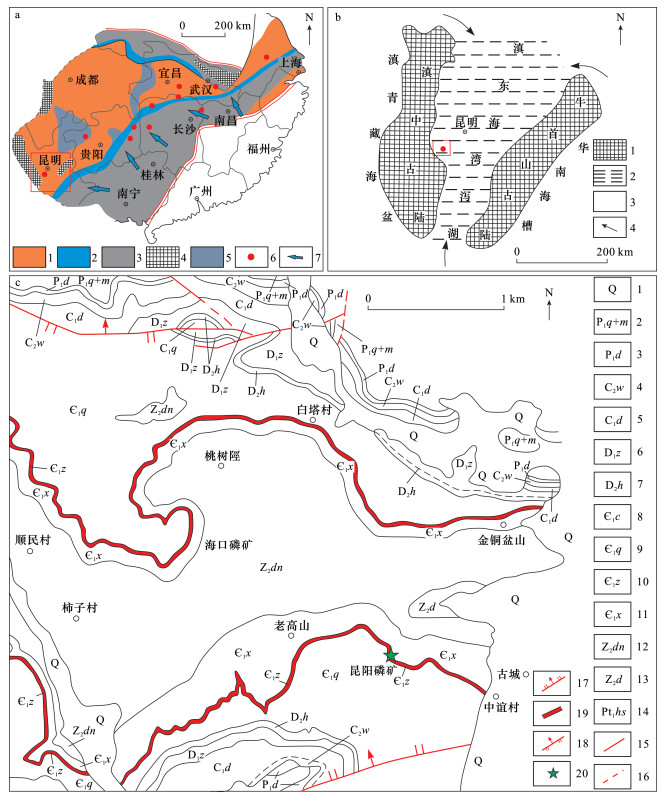
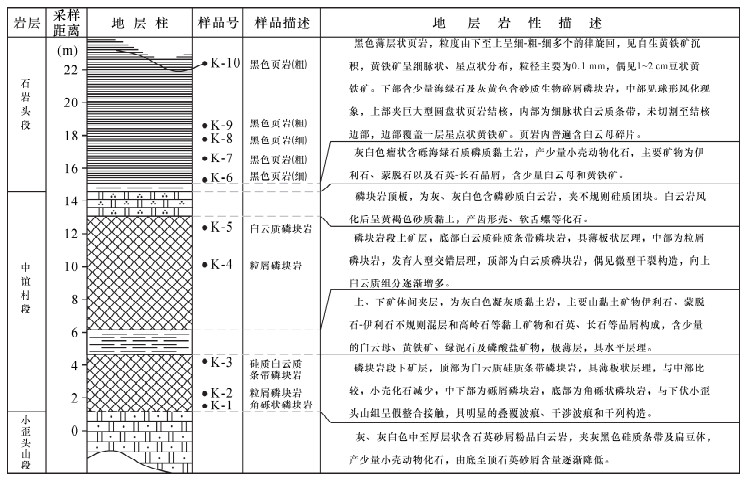
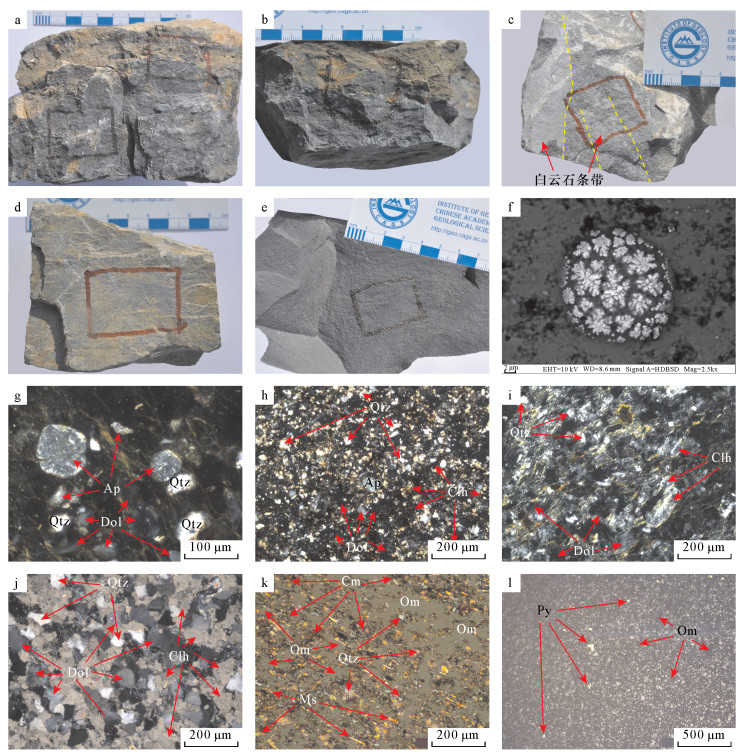
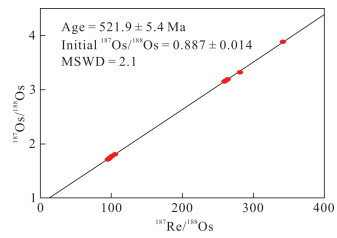
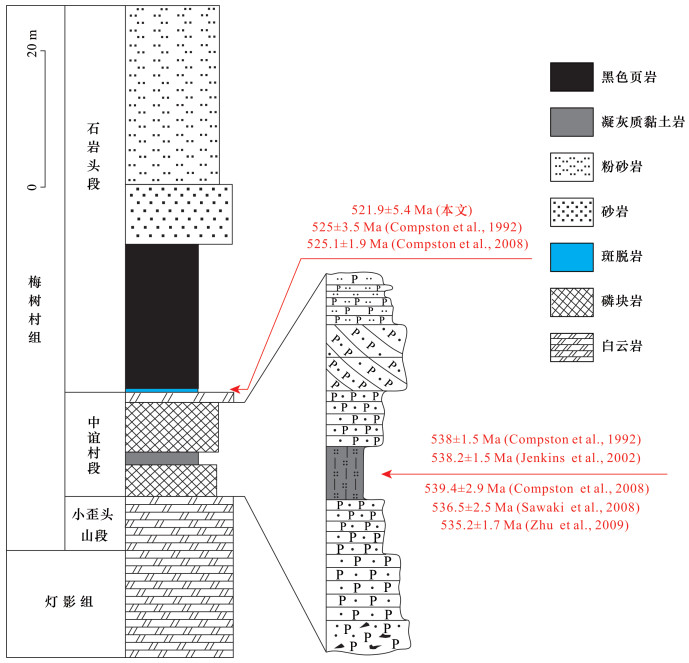
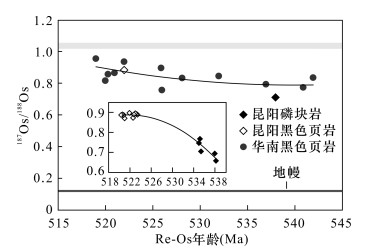
 京公网安备 11010202008159号
京公网安备 11010202008159号